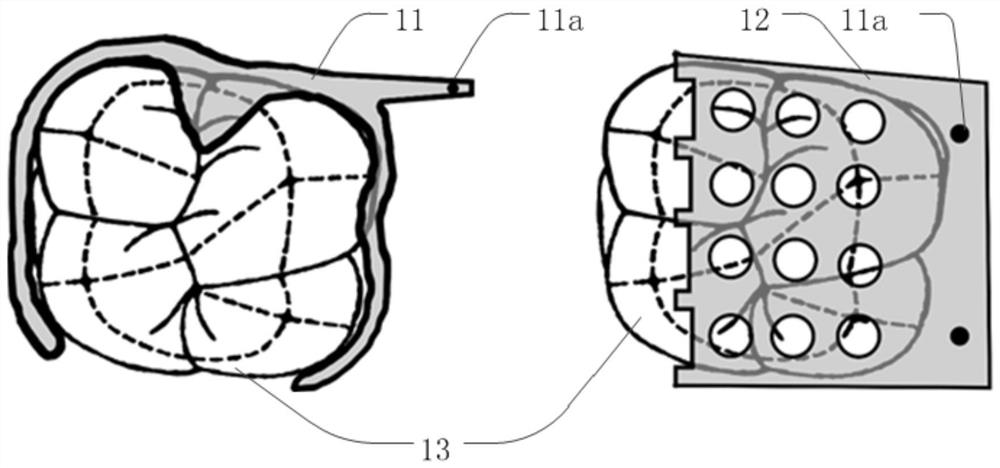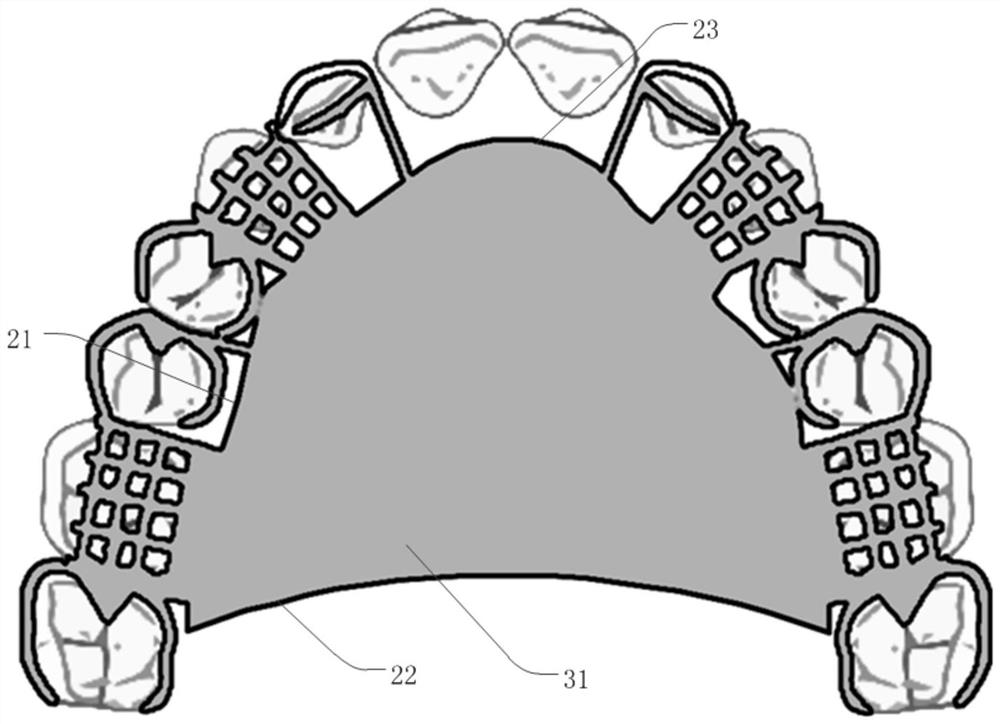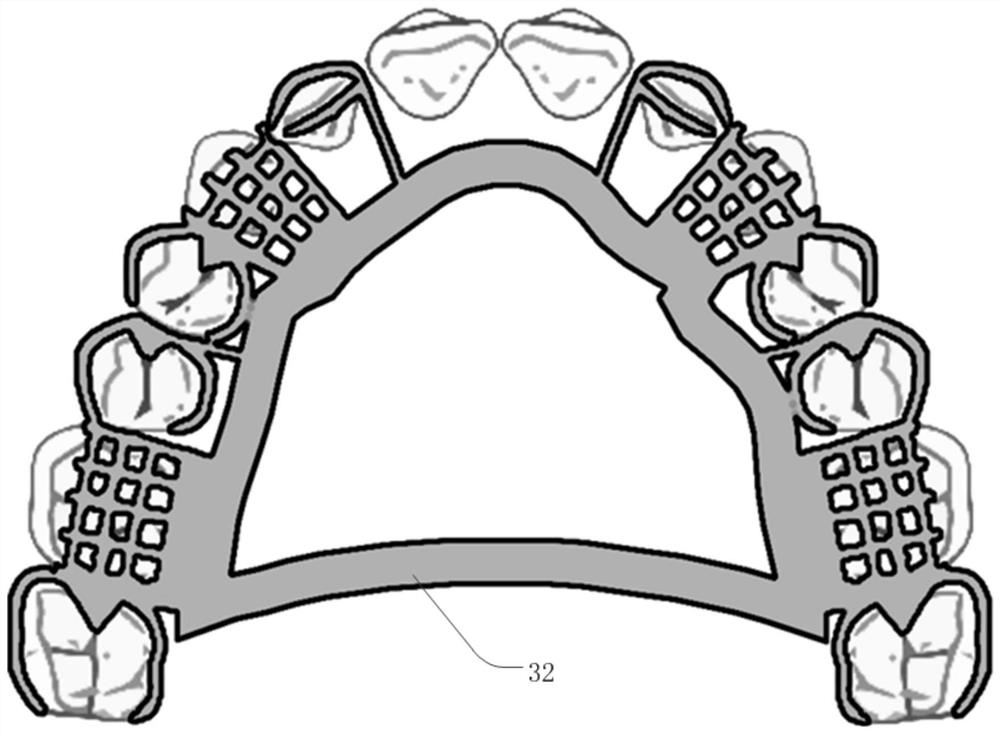A Method of Using Bezier Curves to Design Large Connectors
A Bezier curve and connector technology, which is applied in the field of drawing large connectors for removable dentures, can solve the problems of inconvenient design and manufacturing, poor user experience, and disordered clinical paths, achieving simple design ideas, saving design time, The effect of a high degree of automation
- Summary
- Abstract
- Description
- Claims
- Application Information
AI Technical Summary
Problems solved by technology
Method used
Image
Examples
Embodiment 1
[0046] This embodiment discloses a method for designing a large connector using Bezier curves, which includes the following steps:
[0047] A. Import the patient's oral cavity data into the oral partial denture design system (or other similar existing systems) to generate the patient's oral cavity model, the oral cavity data at least includes the patient's missing dentition information.
[0048] B. Based on the missing dentition information, manually design a clasp or select a matching clasp in the system, and place the clasp layer on the corresponding abutment tooth 13 of the oral cavity model. The existing denture design system already has the function of selecting snap rings.
[0049] C. Draw the contour curve of the large connector, including the following C1-C2:
[0050] C1: Identify the snap ring attachment point. In the clasp and retention network layer, several pixels for easy identification are reserved at the end of the small connector, such as a special color desi...
Embodiment 2
[0054] This embodiment discloses a method for designing a large connector using Bezier curves, which includes the following steps:
[0055] A. Importing the patient's oral cavity data into the oral partial denture design system to generate the patient's oral cavity model, the oral cavity data at least including the patient's missing dentition information.
[0056] The patient's oral data can be obtained through inquiries and oral examinations (such as oral scans). The patient's dentition information is an important basic data for denture design.
[0057] B. Select a clasp (or design it in a corresponding system) based on the oral cavity data (dentition loss information), and place the clasp layer on the corresponding abutment 13 of the oral cavity model.
[0058] C. Draw the contour curve of the large connector:
[0059] C1: Identify the snap ring attachment point.
[0060] In the clasp and retention network layers, there are several pixels with special colors at the end of ...
Embodiment 3
[0072] This embodiment discloses a design method of a removable partial denture based on the design method of the above-mentioned large connecting body. Specifically include:
[0073] A. Import the patient's missing dentition information into the existing oral denture design system, which has modeling capabilities.
[0074] B. Execute steps A-C in the above embodiment, after the user selects the shape of the large connector, execute step D; if the shape of the large connector has been configured when importing the exact information of the dentition, then directly execute the above embodiment Steps A-D. In this way, the design of the first-level scheme (the design of the large connector) is completed.
[0075] C. In the design process of the second-level and third-level schemes (the design of other denture parts that match the large connector), if there is a replacement of the snap ring and the position of the abutment teeth, steps A-D will be automatically re-executed. The ...
PUM
 Login to View More
Login to View More Abstract
Description
Claims
Application Information
 Login to View More
Login to View More - R&D
- Intellectual Property
- Life Sciences
- Materials
- Tech Scout
- Unparalleled Data Quality
- Higher Quality Content
- 60% Fewer Hallucinations
Browse by: Latest US Patents, China's latest patents, Technical Efficacy Thesaurus, Application Domain, Technology Topic, Popular Technical Reports.
© 2025 PatSnap. All rights reserved.Legal|Privacy policy|Modern Slavery Act Transparency Statement|Sitemap|About US| Contact US: help@patsnap.com



